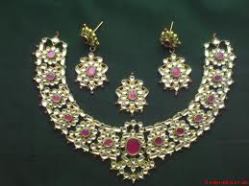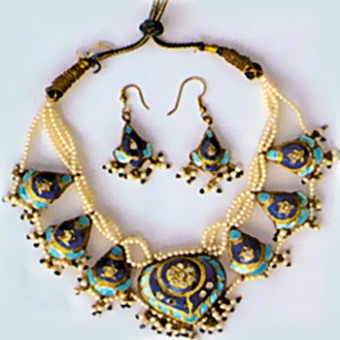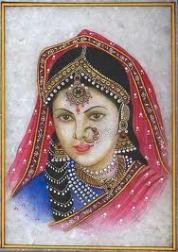Indian Clothing.
Traditional clothing in India greatly varies across different parts of the country and is influenced by local culture,geography, climate and rural/urban settings. Popular styles of dress include draped garments such as sari for women and dhoti or lungi for men. Stitched clothes are also popular such as churidar or salwar-kameez for women, with dupatta (long scarf) thrown over shoulder completing the outfit. Salwar is often loose fitting, while churidar is a tighter cut.For men, stitched versions include kurta–pyjama and European-style trousers and shirts for men. In urban centers, people can often be seen in jeans, trousers, shirts, suits, kurta and variety of other fashions.
In public and religious places, Indian dress etiquette discourages exposure of skin and wearing transparent or tight clothes Most Indian clothes are made from cotton which is ideal for the region’s hot weather. Since India’s weather is mostly hot and rainy, majority of Indians wear sandals.
Indian women perfect their sense of charm and fashion with make up and ornaments. Bindi, mehendi, earrings, bangles and other jewelry are common. On special occasions, such as marriage ceremonies and festivals, women may wear cheerful colors with various ornaments made with gold, silver or other regional stones and gems.
Bindi is often an essential part of a Hindu woman’s make up. Worn on their forehead, some consider the bindi as an auspicious mark. Traditionally, the red bindi was worn only by married Hindu women, and colored bindi was worn by single women, but now all colors and glitter has become a part of women’s fashion. Some women wear sindoor – a traditional red or orange-red colored powder (vermilion) in the parting of their hair (locally called as mang). Sindoor is the traditional mark of a married woman for Hindus. Single Hindu women do not wear sindoor; neither do over 100 million Indian women from religions other than Hindu and agnostics/atheists who may be married.
India’s clothing styles have continuously evolved over the course of the country’s history. Ancient Vedic texts mention clothes made from barks and leaves (known as phataka).[citation needed] The 11th century BC Rig-veda mentions dyed and embroidered garments (known as paridhan and pesas respectively) and thus highlights the development of sophisticated garment manufacturing techniques during the Vedic age. In 5th century BC, Greek historian Herodotus describes the richness of the quality of Indian cotton clothes. By 2nd century AD, muslins manufactured in southern India were imported by the Roman Empire and silk cloth was one of the major exports of ancient India along with Indian spices. Stitched clothing in India was developed before 10th century AD and was further popularized in 15th century by Muslim empires in India. Draped clothing styles remained popular with India’s Hindu population while the Muslims increasingly adopted tailored garments.
During the British Raj, India’s large clothing and handicrafts industry was left paralyzed so as to make place for British industrial cloth. Consequently, Indian independence movement leader Mahatma Gandhi successfully advocated for what he termed as khadi clothing — light colored hand-woven clothes — so as to decrease reliance of the Indian people on British industrial goods.The 1980s was marked by a widespread modification to Indian clothing fashions which was characterized by a large-scale growth of fashion schools in India, increasing involvement of women in the fashion industry and changing Indian attitudes towards multiculturalism. These developments played a pivotal role in the fusion of Indian and Western clothing styles
I will post a whole section on Indian jewellery as it is a vast topic.And very exciting for me as being an Indian women, I love talking about our style of jewellery.
Phir milenge.





